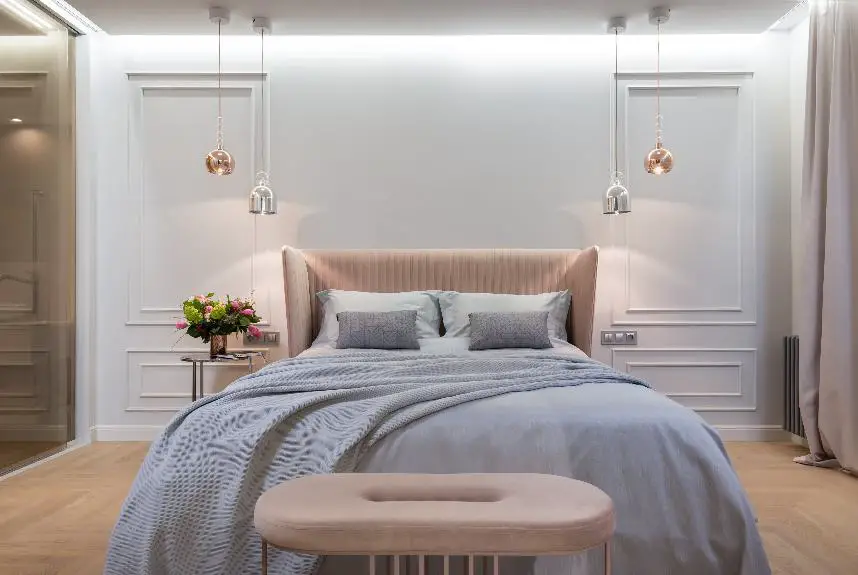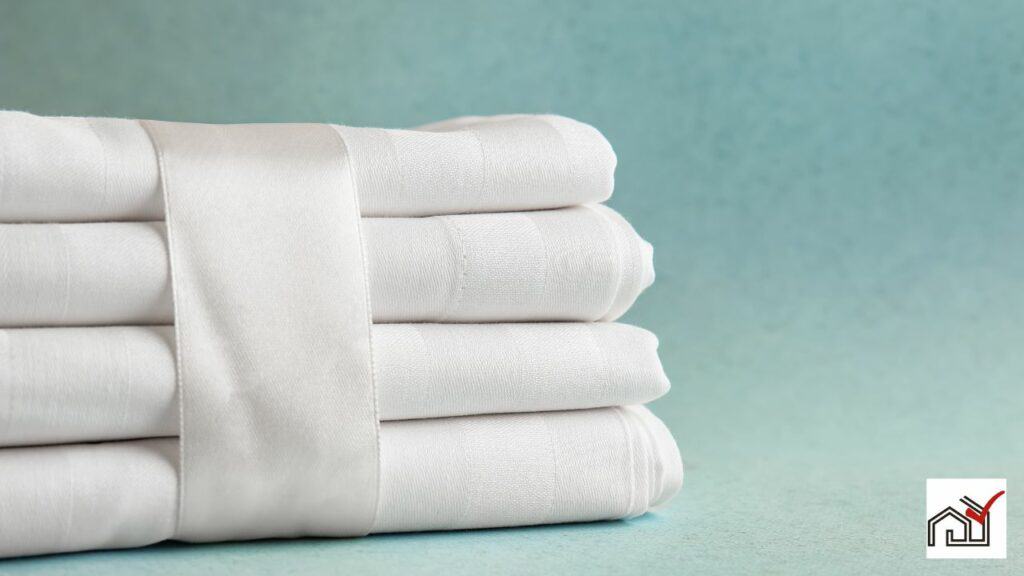A master bedroom and bathroom can have the same color. This can make both rooms feel more harmonious and connected. Choosing the same color involves considering how colors affect mood and how light affects the appearance of colors.
Matching colors can also help create a peaceful and unified space. When deciding on colors for these rooms, it's important to think about the overall design of the house.
Considering Color Psychology
Color psychology is important when choosing colors for the master bedroom and bathroom. These colors can influence mood and well-being. Calming colors like soft blues and gentle greens in the bedroom promote relaxation, while vibrant or dark colors may not be as peaceful.
The bathroom, a place for rejuvenation, benefits from colors that evoke cleanliness and freshness, such as whites and pastels, or bolder colors for energy.
Using the same or complementary colors in both the bedroom and bathroom creates a visual connection and unified look. It's also important for these colors to match the overall home decor for consistency.
Thoughtful color choices can enhance the living space emotionally.
Harmonizing Spaces Aesthetically
To create a cohesive look in a home, coordinating the color schemes of the master bedroom and bathroom is effective. Using the same or similar colors in both rooms makes for a smooth transition and a unified design. This approach requires considering how light affects the colors and the overall balance between relaxation and energy.
While using the same color throughout might seem simple, it results in an elegant look. Using different colors can define the bedroom and bathroom separately but should be done by choosing colors from the same family or by repeating accent colors in both rooms.
Coordinating colors also involves matching new choices with existing decor. For example, blue elements in a bedroom comforter can be echoed in the bathroom's towels or tiles, creating a connection between the two spaces.
The choice to match colors in these rooms is up to the individual, but careful selection can significantly enhance the look and feel of the space, reflecting the homeowner's style and the overall design of the home.
Practical Aspects of Color Matching
In home design, color coordination between the master bedroom and bathroom is important. The bedroom usually features softer colors for a relaxing atmosphere, while the bathroom needs durable paint due to moisture and temperature changes.
The amount of natural light affects paint color choices. A color that looks good in a well-lit bedroom may not look the same in a poorly lit bathroom, impacting the rooms' appearance and feel.
Using the same color in both rooms can make them feel connected and larger. However, different paints may be required to handle the conditions of each room, such as moisture-resistant paint for the bathroom.
Color choices should meet the homeowner's preferences and the desired ambiance. The aim is to balance aesthetic cohesion with practicality, ensuring comfort and style in the master suite.
Transitioning Between Private Zones
When choosing colors for a master bedroom and bathroom, considering both privacy and design flow is important. Colors can help these private zones transition smoothly. Using the same color in both rooms can create a consistent look, but different lighting may affect how the color looks. A bedroom often has softer lighting, which might make warm colors more suitable, while a bathroom usually has brighter light, affecting color perception.
To transition between the bedroom and bathroom, using a variation of the same color can work well. This approach respects the different purposes of each space while keeping a visual link. Coordinating colors in room details, like matching the bedroom's trim with the bathroom's cabinetry, can also help maintain continuity.
Creative Alternatives to Monochrome
Homeowners can use a variety of color combinations to link the master bedroom and bathroom while keeping a consistent design. Instead of matching colors exactly, introducing different colors can add character and depth to a room. For example, a primary color in the bedroom with complementary hues in the bathroom can create a smooth transition.
Using analogous colors, which are next to each other on the color wheel, offers a soft mood shift suitable for relaxing spaces. To connect the bedroom and bathroom, items such as bedroom pillows, art, or rugs can share colors or patterns with bathroom towels or decor.
Introducing different textures or finishes, like a matte in the bedroom and glossy in the bathroom, can keep the color theme but add visual interest.
Ultimately, whether to have a unified or varied color scheme should depend on personal taste and the atmosphere one wants to create. Exploring color alternatives offers a personalized and sophisticated design, making the home a reflection of the inhabitants' preferences and lifestyle.





